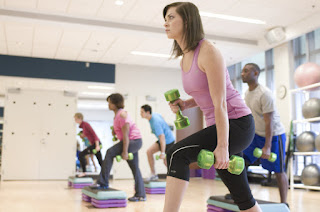How does physical activity help?
Research indicates that physical activity is important for the following reasons:
• Promotion of improved general health through
• cardiovascular fitness
• mental alertness
• weight control
• improved sleep quality
• improved ability to handle infection
• reduced risk of cancer
• Promotion of maximum bone density
• Promotion of optimal physical function to support independence in daily
activities
• Promotion of optimal psychological and social well-being by improving
self-confidence and the ability to interact socially with peers.
What should my fitness goals be?
The optimal long-term goal for children with OI is good health and independence in
all areas of function (social, educational, self-care, locomotion and recreation) using
adaptive devices as needed.
Goals for adults include maintaining independence,
preserving bone density and supporting cardiovascular function. To achieve these
goals, it is often necessary to improve muscle fitness and body alignment.
Specifics of the exercise program vary depending on the individual’s age, level of
function, severity of OI, and needs and desires. Activity programs may include exercises
recommended by rehabilitation professionals as well as sports and other recreational
activities.
When should I being a fitness program?
The first year of life includes many motor skill transitions and is a critical window of
opportunity for babies who are born with weakness, alignment abnormalities and
fragility. Physical therapy should begin as soon as it is evident that the infant has
weakness or motor skill delay when compared to same-age children. Children with
OI can excel in the aquatic environment, particularly if it is presented as an opportunity for recreation and independent exploration, rather than as a situation where an
adult places demands on a child to exercise.
Adults with OI can benefit from aquatic activity, as well. It is an excellent form of
aerobic conditioning, and may impart some benefit with respect to strengthening.
For promotion of skeletal health adults should also try to add walking or other exercises
that will increase bone-loading.
Adults and older children who do not have the
exercise habit should be encouraged to make a new commitment to a healthy
lifestyle and become more physically active. Their program should include exercises
that will improve strength, balance and endurance, be enjoyable and promote
socialization, if possible. Rehabilitation specialists or exercise specialists who are
familiar with OI or osteoporosis can help design an appropriate program.
Isn’t exercise dangerous for people with OI?
Exercise can be done safely by people of any age who have OI. Obstacles to
performance to consider when evaluating an activity include prior fracture history,
degree of bending in long bones, degree of muscle weakness, joint stiffness or
laxity, joint alignment, poor exercise tolerance and stamina. For instance, longterm
sitting in a wheelchair may be associated with back pain and joint stiffness. A
safe exercise activity could be as simple as getting out of the chair and changing
body positions at least once every two hours.
People with OI should avoid some activities, including jumping, diving, contact sports
and activities that might promote falls, abrupt joint compressions or high twisting
forces on bones.
Where do I start?
ALWAYS begin by discussing your goals with a qualified medical professional familiar
with your or your child’s medical history. One strategy for developing a successful
exercise program at any age is:
Determine the person’s capabilities.
Ask “What can the child/adult do?”
Determine the objective you want to pursue.
Ask “What is the child/adult trying to achieve?”
Determine the constraints or limitiations to achieving the goal or objective.
Ask “Is limited range of motion, strength, alignment or joint instability preventing
successful performance?” These issues may need to be addressed
before the goal can be accomplished, or incorporated into a program that
maximizes reduction of the limitations.
Determine which compensations or aids are available to help accomplish the
goal.
A very wide variety of devices exist to support improved function. Examples
include bathroom safety equipment, ambulation aids, reachers, and floatation
devices. A consultation with an occupational therapist might be necessary
to help choose the best devices to accomplish a specific goal.

Comments
Post a Comment